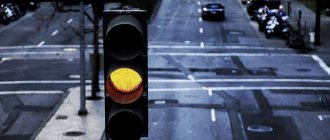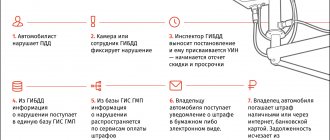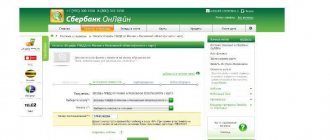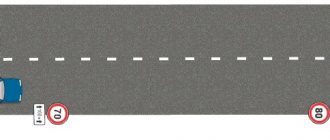Getting speeding tickets is downright frustrating, not to mention it can cost quite a penny. With paper maps largely a thing of the past, today's drivers rely on GPS services for directions and speed limits.
Tap Settings & Speedometer for Android users
Read the article for more information
Let's be real, it's much more convenient to have your own display and just see the map all the time. Having the speed limit on screen also negates the risk of “Oh, shoot! I was going 50 mph in 30! It looked like a highway! » Luckily, Google Maps offers this feature now.
Unfortunately, the speed limiting option is only available for Android users. Those who have an iPhone may have to wait a little longer for this new feature or use a different app, which we will discuss in this article.
While most GPS devices and apps offered to display the speed limit right from the start, Google Maps was late to the game. However, recently this useful feature is also available in Google Maps.
What about the speed limit?
While the feature has been widely available in the app since early 2019, speed limits are nothing new for Google. By this point in the article, you can probably guess that the journey began with an acquisition.
In 2013, Google spent nearly $1 billion to acquire Waze, a wildly popular navigation software known for its detailed road information. We'll share more about Waze for iPhone users, but the app's acquisition ultimately led to Google releasing a speedometer update for Android users.
Much to the dismay of county treasurers, the update includes speed camera icons to help you avoid speeding traps and tickets. Apart from the US, this convenient feature is also available in Mexico, Brazil, Canada, Russia and several other countries. So, if you are planning to take a road trip to Cancun, you can do it with complete peace of mind.
Traffic speed
Traffic regulations regulate in detail the speed limit for all types of vehicles. The main categories are the following parameters:
- Terrain;
- Type of vehicle – truck/passenger car;
- Presence of dangerous cargo in the car;
- Presence of people in the car – there is movement without passengers or there are people in the vehicle (especially children or groups of people).
In addition, additional road signs may regulate the maximum speed limit. You cannot ignore them and allow speeding to happen.
The rules are based on two important concepts:
- The first concept is the braking distance of vehicles . The concept is derived exclusively from physical laws. Braking distance is the distance a vehicle will travel with the brake pedal pressed. The distance is affected by speed, roadway surface, and vehicle weight.
- The second concept is stopping distance . The concept refers to the distance in meters that the car will travel until it comes to a complete stop from the moment the driver detects a dangerous situation. As you might guess, the stopping distance consists of two components - the speed of the driver’s reaction to a dangerous situation plus the braking distance itself. Many factors influence the speed of the reaction. Such factors include visibility and a relatively subjective concept - the psychophysiological state of the driver.
Read more: Accounting in production posting examples
If the roadway is poorly lit or there is fog, all this will lead to a slower driver's reaction in case of danger. In addition, the driver himself may not be concentrated (for example, due to lack of sleep), which will similarly lead to an increase in the stopping distance. Safety – personal, pedestrians, and other drivers – depends on concentration. If you approach the issue inattentively, drive with violations, or for failure to comply with traffic rules, you should prepare to pay a fine or even criminal punishment.
Based on physical laws, statistics and international practice, speed limits were developed in the traffic rules, provided for different areas and conditions.
How to enable speed limit
Turning on the speed limit on Google Maps is very simple. To get started, launch the application, select “Menu” and click “Settings” (gear icon).
In the Settings section, click on the speedometer and enable additional settings as desired. Settings include:
- Show Speed Limit – Shows the speed limit for the road you are currently on. It is located next to the speedometer.
- Show speedometer – an icon appears in the lower left corner indicating the current speed.
- Play Alert Sound - The alarm turns off when you exceed the speed limit.
- When to show the alert - you can choose whether you want the alert to be higher or at the speed limit.
Fines for driving too slowly
The Code of Administrative Offenses does not provide for a separate article containing punishment for driving at too low a speed (if there is a 4.6 sign). However, for this violation the driver may be punished under Part 1 of Article 12.16 for failure to comply with the requirements of road signs.
Read more: Application for refund of loan insurance premium
For too low a speed, you can receive a warning or a fine of 500 rubles .
Note. In this case, it does not matter how much the car’s speed was less than the value indicated on the sign. The fine will be the same.
Other useful features
Google Maps is a truly powerful navigation system. There are many customization options, hidden features, and geospatial search tools. Here are some that you will definitely find useful.
Offline Maps
Like most users, you probably access Google Maps on your smartphone. But what happens if there is no coverage? No problem, Google will help you.
Select a destination and tap the bottom of the screen. Click Download in the pop-up window and you can access the map (including destinations and companies) from the download section.
Shared trip
Google Maps allows you to see photo sharing options from Lyft and Uber in the app. Select your destination and click on the travel icon or public transport icon.
You're immediately shown all available vehicles in your area, including fare and time estimates, although this service may vary depending on your exact location and your internet or data connection.
Time travel
Street View's huge collection of images lets you see how streets have changed over time. Want to see what your neighborhood used to look like? Now you can. This special time machine is now available in all locations and you can access it by clicking on the stopwatch icon.
Disabled accessible routes
To find wheelchair accessible routes, tap Destinations after selecting your destination.
Then tap the public transportation icon and select Options.
From there you will be able to see the wheelchair accessible route.
This feature was first available in New York, Boston, London and several other cities around the world. However, more information is being added, so feel free to check it out. Updates keep coming, so make sure you are always using the latest version to get the latest features.
Location history
Depending on how long you've been using Google Maps, you may have received an email in January 2021 with a link to view your location history. Basically, the app can track you throughout the year and throughout your travels, and it reminds you of where you've been.
Some might think it's a cute way to remember trips or even a useful way to track your gas mileage. You can see this information in the Location History tab in the app.
How to avoid getting caught for false speeding
The camera recorded speeding, I did not receive a copy of the protocol Art. 20.
25 of the Code of Administrative Offenses of the Russian Federation “Failure to pay an administrative fine within thirty days from the moment the decision on an administrative offense comes into force shall entail the imposition of an administrative fine in the amount of twice the amount of the unpaid fine, or administrative arrest for up to fifteen days.”
" It's them. that Russian roulette was set up, how can I pay the fine. Check the fine at the traffic police. If 18.13.2 or 18.13.3 is a speed violation not based on video recording, then repetition is applied. If there was a violation under Articles 18.13.5-8, then no repetition is provided for them.
Look. Under what articles were you fined? Good afternoon.
Cameras record exceeding speed limits and other traffic violations. In total, there are 2 standard methods of fixation:
The installation recognizes the license plate number of the vehicle, and a few days later a so-called “chain letter” is sent to the violator’s postal address. Such a shipment contains a receipt for payment of the fine, photographs from a tracking camera and a resolution with the following information:
- place, date and time of the offense committed;
- deciphering the violation;
- the amount of the fine;
- the period within which it must be paid.
Since most fines can be paid with a 50% discount, many are interested in the question of how quickly fines appear on the traffic police website. Read more about this below.
- Driving through a prohibiting traffic light.
- Exiting the stop line.
- Entering an intersection when there is a traffic jam.
- Drifting into the oncoming lane.
- Pass under the “No Entry” sign.
- Pass under the sign “Trucks are prohibited”.
- Entering the lane for route vehicles.
- Drive out onto the sidewalk.
- Truck traffic beyond the second lane on highways and roads for cars (MKAD).
- Violation of road marking requirements.
- Making a turn from the second row.
- Low beam headlights or daytime running lights are not turned on.
- Violation of toll rules for heavy trucks.
- Failure to give priority to pedestrians at pedestrian crossings.
Stationary cameras can monitor traffic simultaneously in several lanes, including oncoming lanes.
It is no secret that drivers are under close surveillance not only by traffic police officers, but also by video and photo cameras that are equipped on the roads. Collection of fines in the latter case has its own specific disadvantages.
These include notifications that are not received on time, or their complete absence, which can increase penalties. Therefore, most motorists are interested in how long it takes for a fine to arrive from the camera on the traffic police website.
Why do we need cameras to record traffic violations? Chapter 12 of the Code of Administrative Offenses of the Russian Federation stipulates the use of automatic video and photo recording cameras on the roads. Such devices are needed to track all crimes committed, most of which inspectors are unable to cope with.
As a result, violations of traffic rules by drivers do not go unpunished.
Or another common case, incorrect identification of the license plate - the photo from the cameras shows the license plate of your car, but the make of the car does not match. What to do in such cases, where to look for the truth? The traffic police calls for challenging fines. To begin with, you need to clearly understand that even an incorrectly issued fine will remain “hanging” on you if you do not pay it or do not challenge it.
A little earlier, only traffic police officers, which is now called the traffic police, were tracking violators - they drew up a protocol at the scene of the violation and immediately issued a fine.
Times have changed: today inspectors have received powerful technological support in the form of cameras, namely photo and video recording. They are capable of recording both photos and videos, which help identify violations while driving.
Penalties applied to drivers by traffic police inspectors are designed to normalize the situation on the roads and encourage motorists to follow driving rules. A set of rules for safe driving was published to avoid troubles and accidents, but not all motorists are happy to follow the rules of the road.
The service is very easy to use - all you need is Internet access to make a request. Requesting data to search for fines takes a few seconds. Two checking options:
- Vehicle and driver verification. The following fields are entered: car number, series and STS number, driver's license number.
- Check by resolution number. To do this, you only need the resolution number.
If the user wishes to receive notifications about the presence of fines, then they must indicate their email address when creating the request.
To provide data, you must fill in all empty fields and click on the “Find fine” button.
When a violation is recorded by cameras, a resolution is drawn up according to the state number of the car, so the fine will be assigned to the owner of the vehicle, even if another driver was driving when the camera was filmed.
The presence of unpaid fines may be an obstacle to registering a car after its sale. In this case, you can first submit a request for a data verification when considering a purchase option.
The service allows you not only to view photos of violations and check for fines, but also to make payments online. A refund is guaranteed if the decision is contested. Payment history is saved in the client’s personal account, access is available after registration. To track information, sections “My cars” and “My license/drivers” have been created. There are also tabs “Unpaid fines” and “Paid fines”, where any transaction can be found by UIN or by the violator’s last name.
Speed limits for iPhone users
As stated above, Google Maps does not have the ability for iPhone users to view speed limits in the app. While Google Maps has a lot of features, and very accurately, if your heart is set on this feature, you should check out Waze.
Once the app is downloaded to your phone, you can set up an account with your familiar places, preferences, and more. Turn on the speedometer by following these instructions:
- Click on the "Search" option in the lower left corner of the application.
- Click on the settings icon located in the top left corner of the pop-up window.
- Scroll down to "Speedometer"
- Enable this option so it will be green
This application allows you to interact with other drivers. Whether you see debris on the road or a police officer, you and others can update this information and warn other drivers. This application is also available for Android users.
Once you set up your account, you can earn a crown by alerting other drivers and receiving waves or thanks! If you are curious about the traffic jam, you can check or add comments.
How quickly fines from video recording cameras get into the traffic police database
- "I am 53 years old. I get 150 rubles"
- Pleasure lasts a month, duty lasts years. What you definitely shouldn’t take out a loan for
- In Ukraine, a cat himself “paid for” the repair of a car he damaged
- It will get significantly colder in Belarus in the near future
- Popular crackers banned from sale in Belarus
Many people do not know how quickly fines are sent from cameras to the traffic police website and mistakenly believe that this happens almost instantly. In fact, information about the violation and the nature of the administrative punishment does not appear immediately.
Surveillance cameras record a large number of situations every day. However, the received data is processed by the traffic police, and such a procedure takes time. According to the Code of Administrative Offenses (29.6), a violation recorded on a digital automatic device is considered by law enforcement officials for up to 15 days.
The process involves the following steps:
- Study of materials;
- Drawing up a recording protocol;
- Entering information into the current database;
- Preparation of a resolution obliging the driver to pay the penalty.
It is important to know! Thus, it is impossible to reliably determine how long it takes for a fine to arrive from the camera. The maximum possible period is 15 days, but usually the time period is much shorter.
Having determined how long it takes for traffic police fines captured by camera to arrive, it is recommended to consider ways to find out whether there are penalties for violations committed. It is better not to wait for a letter, as it is often lost or delivered to the wrong address. To eliminate the potential for errors and associated unpleasant consequences, you should consider the basic methods of self-checking.
Advice! You can find out about the need to pay in various ways. Most of them are available to every Internet user. However, it should be understood that information about violations in online services is reflected only after it enters the database. Because of this, it will not be possible to find out about the punishment before the due date.
This is the most convenient and reliable way. Having found out how long it takes for fines to appear in the traffic police database, it is not at all difficult to carry out a check yourself using the official resource.
To obtain information about the debt, the user just needs to enter the license plate number and STS. After processing the request, information about all outstanding fines will appear on the screen. The driver will be able to find out what violation he committed, find out the order number and, if necessary, independently look at photos from the scene of the incident.











